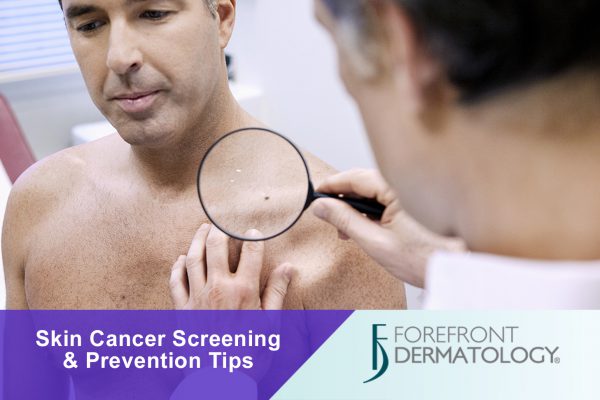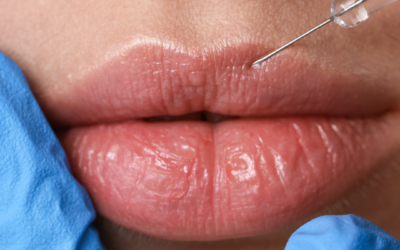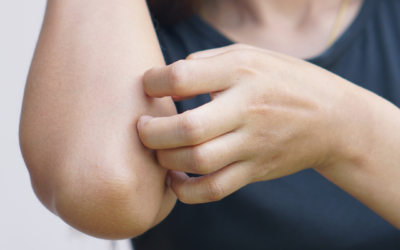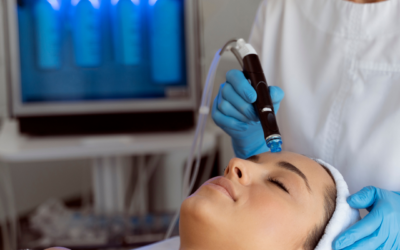
Did you know that skin cancer is the most common cancer in the United States? In fact, 1 in 5 Americans will develop skin cancer in their lifetime. The good news is that with early detection and proper treatment, skin cancer has a very high cure rate.
Skin Cancer Self Examination and Screening According to Dr. Zain Husain, a board-certified dermatologist with Forefront Dermatology, in Tysons Corner, VA, “The most important things you can do to protect yourself from skin cancer are to see your Forefront Dermatologist annually for a thorough skin cancer screening, perform regular self-examinations of your skin, and practice preventative care.”
The Skin Cancer Foundation recommends that everyone practice monthly head-to-toe self-examinations of their skin, so that they can find any new or changing lesions that might be cancerous or precancerous. But to guide you in how to perform a self-examination, you may find it useful to visit your local Forefront Dermatologist first to do a full-body exam, to assure you that any existing spots, freckles, or moles are normal or treat any that may not be.
Lori, a patient with Forefront Dermatology shares, “Without a skin screening from Forefront, I may not be sitting in this chair telling this story.” In the following video testimonial, Lori discusses how a routine skin cancer screening led to the discovery of a melanoma skin cancer, and how this early detection by her Forefront Dermatologist, Dr. Kathleen Garvey, saved her life.
What Can I Expect At a Skin Cancer Screening? You may be wondering what a skin cancer screening will be like and how long it will take. When you see your Forefront dermatologist for a complete skin check-up, you can expect a 10-15-minute visit, including a review of your medical history and a head-to-toe skin examination.
At this time, let your dermatologist know about any spots you are worried about; your dermatologist can teach you what to look for in the future if you’re not sure, such as any changes in the size, color, borders, or shape of a mole. Any notable changes in a mole should be checked out. Typically, a spot that the doctor suspects is cancerous will be biopsied. During a biopsy, a sliver of tissue is removed for evaluation by a pathologist, who confirms (or refutes) the dermatologist’s suspicions.
Conducting Monthly Skin Cancer Self-Examinations It is also recommended that you conduct monthly skin self-evaluations at home on your own. This quick 10 minute procedure could be life-saving. You can have your dermatologist give you an initial lesson on performing a skin examination and you can also learn how to perform one here. This will help you to monitor any changes in spots on your body and bring them to your dermatologist’s attention as early as possible.
Skin Cancer Prevention Tips In addition to seeing your doctor annually for a thorough skin cancer screening and performing monthly skin checks, there are several other things you can do to prevent skin cancer:
- Stay indoors or look for shade in the middle of the day when UV radiation is strongest, usually between 10 AM and 4 PM
- Avoid using tanning beds
- Keep newborns out of the sun
- Avoid sunburns
- Seek shade under an umbrella, tree or other shelter to seek relief from the sun
- Cover up with long-sleeved shirts, long pants, wide-brimmed hats, and sunglasses for the best protection against UV radiation
- If you can’t cover up completely, be sure to use a broad-spectrum sunscreen with a sun protection factor (SPF) of at least 30 on all exposed skin throughout the year
Your Local Skin Cancer Experts at Forefront Dermatology are Here to Help If you or a family member would like to have a skin cancer screening, find the Forefront dermatologist nearest you to schedule an appointment or to learn more.





